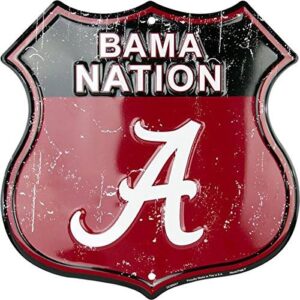I'm gonna be putting up several posts here, partly thinking out loud and partly making an argument.
If you had asked me in 2010 who the greatest college football program of all-time was, I would have said Notre Dame. Seriously. In fact, it has long been considered pretty much indisputable that the TOP TWO programs of all-time were the Irish and the Tide. However, I have argued since January 7, 2013, that Alabama now owns that designation.
Let's agree (because of the whole controversy thing) to set aside pre-1936 ONLY FOR COUNTING TITLES. I'll agree to that, okay (just for now). Let's consider what an all-time team would have to have to be considered the greatest program of all-time. Keep in mind that I have no idea how ALL of the details will play out, I just know some of them.
1) Wins
No comment necessary here. An all-time great program is going to have a lot of wins. Michigan is number one all-time with 915. They're followed by Texas, Notre Dame, Nebraska, Ohio State, Oklahoma, Alabama. I'm assuming this is with our 'vacated wins' subtracted.
So four of the top five selected are here. Notre Dame has 882, Alabama and OU 850, and everyone else is in between. Not a substantial difference.
2) National Championships
A lot of wins is going to lead to a lot of national titles. What's the post-1936 count?
Alabama 10 (note that we don't count 1973, either)
Notre Dame 8
Oklahoma 7
USC 5
Ohio State 5
3) National Championships In Different Decades
So that we're talking long term dominance, a team should have titles across multiple decades, demonstrating in particular the changes that occur and adapting to them.
Alabama - 60s, 70s, 90s, 00s, 10s
Notre Dame - 40s, 50s, 60s, 70s, 80s
Ohio State - 40s, 50s, 60s, 00s, 10s
Oklahoma - 50s, 70s, 80s, 00s
USC - 60s, 70s, 00s
THREE of the five schools have won titles in FIVE different decades.
4) Bowl Wins
The immediate objection is that Notre Dame didn't play bowl games prior to 1970 (for the most part) so how can we count these. The problem is that bowl games - even while considered exhibitions - virtually always featured match-ups of highly ranked and well thought of teams. Ohio State also gets punished just a bit because of the Big Ten 'no repeat' rule.
But given the plethora of bowl games today, I think you have to limit these as well. It's preposterous to put the modern-day Music City Bowl on par with the 1964 Sugar Bowl. So I would only count bowl appearances in the Big Four prior to 1987 and then include the Fiesta Bowl, starting with Miami-Penn State.
Problems With The Weekly Counting
There are some immediate problems with the weekly counting of AP top-ranked teams. Here's a rather obvious one - how many times were these teams PRE-SEASON number ones?
The AP didn't release a preseason poll until 1950. Notre Dame was ranked there first in 1950....and the Irish then proceeded to go 4-4-1. But they still get points under the 'AP only' system.
Alabama was pre-season #1 four times - 1966, 1978, 2010, and 2013. And 1966 shows all that's wrong with using AP only ratings as Alabama dropped without doing anything wrong in September.....but Notre Dame did NOT drop after their playing for a tie against Michigan State. And Alabama gets a bunch of points for 12 straight polls at the top in 2013.......only to not even the win the division.
Oklahoma was pre-season #1 TEN times.....meaning they pocketed easy points in 1955-56-57-74-75-77-85-86-87-03-11
Notre Dame (1950, 1953, 1954, 1967, 1971)
Ohio State (1958, 1962, 1969, 1970, 1980, 1998, 2006, 2015)
USC (1963, 1973, 1979, 2004, 2005, 2007, 2012)
So OU starts at number one and gets points. They get to run up a BUNCH of points in a year like 2003......when they get blown out in the Big 12 title game and still get a shot at the whole bowl of wax....and lose again. Same with Ohio State in 2006, where they got all the way to the title game against Florida......and got clobbered.
So because the AP overrated a team like Notre Dame in 1950 or (to a much lesser extent) USC in 2007, it doesn't matter. They get points for it.


